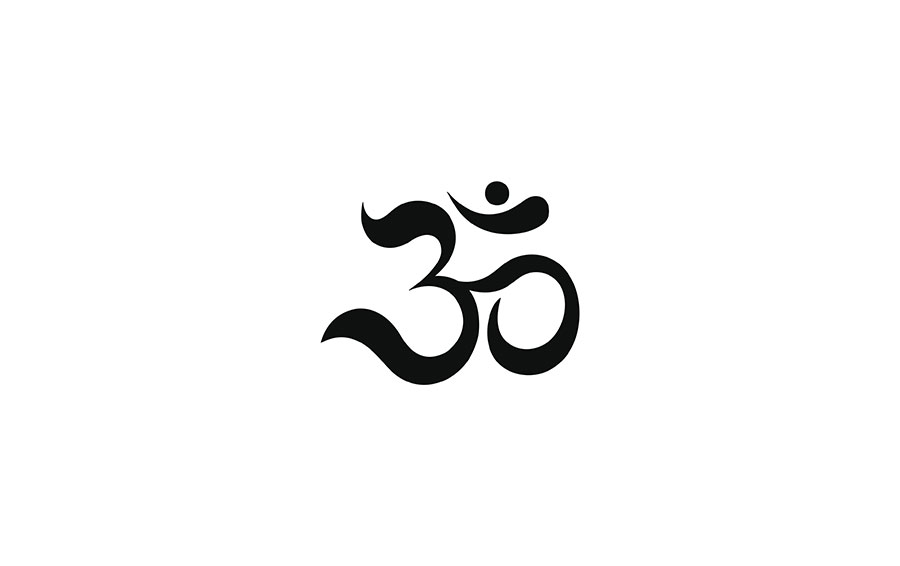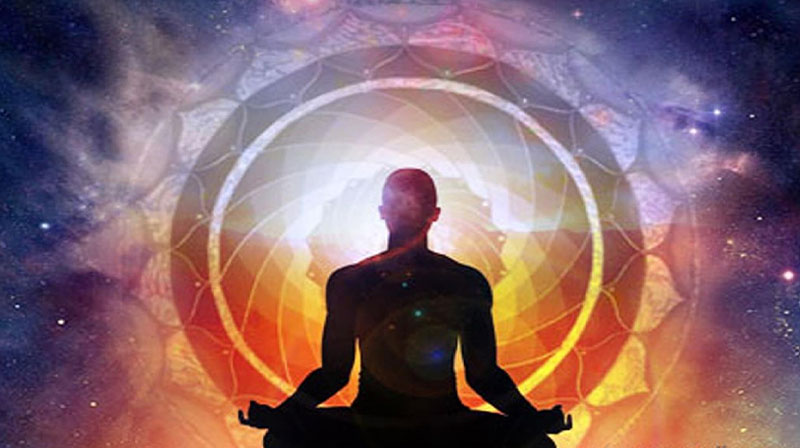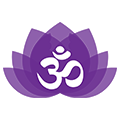Learn Mantra Meditation – Simple and Effective Method You Can Start Today
This is a post by Carmen from Silky massage, talking about tantra, mantra and meditation. It is very helpful for people who wanna try mantra meditation but could not find the way. Enjoy! Mostly everyone has heard of the sacred symbol and sound OM – or AUM, as it is spelled in its original form. In this post, I will instruct you how to learn Mantra Meditation. The technique is simple, but it definitely can take you very far!
The origin of this meditation technique is in the old tantric text, Vijnana Bhairava Tantra from Kashmiri Saivism tradition. In this text, there are 112 different ways to attain self-realization through simple and accessible methods. The AUM-meditation is number 16 on the list.

Symbol OM – or AUM
What is a mantra?
Let’s start with a definition of a mantra – what is it, actually? A dictionary definition would be: a word or sound repeated to aid concentration in meditation. Yet another definition of the Sanskrit word mantra would be as follows: man denotes the mind, and tra would mean to guide or direct. From this we could conclude that a mantra is a tool that is helping or directing our mind to become something, or to be guided to some direction. Let’s come back to this idea a bit later.
Often mantras are composed of different words, and thus do have a meaning. A famous example of this would be Gayatri Mantra:
Om bhur bhuvah svah
tat savitur varenyam
bhargo devasya dhimahi
dhiyo yo nah prachodayat.
Which would translate for example:
O God! Giver of life, Remover of all pain and sorrows,
Bestower of happiness, the Creator of the Universe,
Thou art most luminous, adorable and destroyer of sins.
We meditate upon thee. May thou inspire, enlighten
and guide our intellect in the right direction.
If we would recite mantras where the words have a meaning, the pronounciation would not be of utmost importance. The message would still be the same. However, when we are working with sound and vibration, the pronounciation does make a difference.
The other type of mantra is a sound, a vibration, which in itself is not carrying a meaning. Such is the mantra AUM. In Sanskrit, the letters A and U can be spelled O, for short, but for the purpose of this meditation, we will be using the original form, where each letter is pronounced separately. So in our use, AUM is different from the more common OM.
The purpose of this kind of meditation is to let our brains reflect the reality the mantra is describing. That’s why mantras can be very potent and powerful. If you would know the exact way to use a healing mantra, for example, you could create health. Or wealth, or a new universe, for that matter.

Mantra AUM is called the original sound, Pranava, from which all other sounds and mantras could be derived. The following passage is a translation from the original text of Vijnana Bhairava Tantra:
O Bhairavi,
by perfect recitation of pranava
or the sacred syllable aum,
and by contemplating over the void
at the end of the protracted phase of it,
and by the most eminent energy of the void,
the yogi attains the void.
A few words about meditation
Nowadays the word meditation is used in many different meanings. Meditation could mean mindfulness, contemplation, visualization or even just thinking about something. The technique we are practicing here is actually a method of concentration, which can eventually bring us in to a state of meditation.
The state of meditation itself would be difficult to define or describe, but we’re talking about a state of consciousness, a controlled expansion of the mind. Controlled, because for example with different kinds of drugs you could expand your mind but it may not be so constructive or coherent method after all.
By reciting a mantra, we can help our mind to find more peace, to calm it down and develop the ability to “witness awareness”, where we can see the different thoughts, feelings and bodily sensations while not getting attached to them. It is also very likely that our busy mind will wander away with some thoughts along the way. What we then do is just to bring the mind back on to the practice. Fortunately, when repeating a mantra, it is fairly easy to keep the mind under control!
The practice of mantra meditation with AUM
AUM… AUM… AUM…
There are several ways how to use mantras in meditation. The traditional way to do it would be a repetition of the mantra. This is called japa. There are three kinds of japa:
External (mantra is said or sung out loud)
Humming or whispering (more subtle)
Internal or mental repetition
Of these, the mental repetition is the most powerful one, but if your mind is very agitated, it may be helpful to start with reciting the mantra out loud and then gradually move to more subtle levels of practice.
The way to practice is to repeat the mantra mentally, in your own rhythm. Some texts describe the duration of each letter as one matra, which used to be a measurement of time. But to start with, you could use about one second for each letter, and pronounce them clearly in your mind:
A-U-M-[silence]
The dot in the graphical symbol of AUM (see photos above) refers to the void, stillness, so after you have finished the letter M, you could let it dissolve in to an eternity, before starting a new round.
Once you start practicing, you will notice that the rhythm will start to settle in to your own internal rhythm, and you may feel the wave-like subtle movement in your body.
If you can repeat the mantra with a different rhythm than your breathing, it could help you to take the practice deeper. It is as if you would completely forget about your breath, and repeat the mantra either faster or slower than the rhythm of breathing. But if it feels difficult, it’s ok to go along the breath as well!
The practice duration is ideally 25-30 minutes, but even 10 minutes per day could help you to calm down your mind and gain more focus.
Some yogis say that the repetition of AUM will promote an alpha brain-wave state at 10Hz frequency, which creates a relaxed and creative awareness, and sometimes even a very blissful state of mind. Sounds good, no?
A good meditation posture is the one you can maintain an upright spine and a stillness of the body for the duration of the practice. Padmasana, the Lotus pose, would be an ideal asana for meditation, but it is rather difficult for many of us Westerners as it requires a lot of flexibility in the hips and the knees. Half lotus is easier, but is not as stable as the full Lotus.
Vajrasana, the Diamond pose, would be another great option for this practice. It is simple to do, just kneel on the floor and keep your hands on your thighs or in your lap, hands cupped on top of each other. If it’s too much on your knees, you can sit on a pillow instead of your feet. Or use a meditation zafu or a bench if you prefer.
So let’s get started!
Here’s a recap of the steps of this simple yet profound practice:
- Set a timer for the duration of this meditation, so that you do not need to worry about the time. You can get some great apps for your phone for this. Remember to keep your mobile on a silent mode!
- Assume a steady and comfortable meditation posture and keep your eyes closed for the entire duration of the practice.
- Take a few deep breaths, letting your exhale be longer than the inhale. This will help your nervous system calm down and promote relaxation.
- Start repeating the sacred AUM silently in your mind. Choose a rhythm that feels natural to you. Keep the duration of each letter rather equal.
- Remember to savour the silence between the repetitions.
- If your mind wanders, gently and smilingly bring it back to the mantra.
Enjoy!
This is a post by Carmen from Silky massage, if you find this post is interesting , welcome to leave comment below and read more at Silky massage’s blog.




